1. Goadsby PJ. Recent advances in understanding migraine mechanisms, molecules and therapeutics. Trends Mol Med. 2007; 13:39–44. PMID:
17141570.

2. Diener HC, Dodick DW, Goadsby PJ, Lipton RB, Olesen J, Silberstein SD. Chronic migraine--classification, characteristics and treatment. Nat Rev Neurol. 2012; 8:162–171. PMID:
22331030.

3. Ferrari MD. The economic burden of migraine to society. Pharmacoeconomics. 1998; 13:667–676. PMID:
10179702.

4. Michel P, Dartigues JF, Lindoulsi A, Henry P. Loss of productivity and quality of life in migraine sufferers among French workers: results from the GAZEL cohort. Headache. 1997; 37:71–78. PMID:
9074290.

5. Evers S, Afra J, Frese A, Goadsby PJ, Linde M, May A, Sándor PS. EFNS guideline on the drug treatment of migraine--revised report of an EFNS task force. Eur J Neurol. 2009; 16:968–981. PMID:
19708964.
6. Malik SN, Hopkins M, Young WB, Silberstein SD. Acute migraine treatment: patterns of use and satisfaction in a clinical population. Headache. 2006; 46:773–780. PMID:
16643580.

7. Silberstein SD, Marmura MJ. Acute migraine treatment. Headache. 2015; 55:1–2.

8. Silberstein SD, Goadsby PJ. Migraine: preventive treatment. Cephalalgia. 2002; 22:491–512. PMID:
12230591.

9. Silberstein SD. Preventive treatment of migraine. Trends Pharmacol Sci. 2006; 27:410–415. PMID:
16820222.

10. Sidhu HS, Sadhotra A. Current status of the new antiepileptic drugs in chronic pain. Front Pharmacol. 2016; 7:276. PMID:
27610084.

11. Rogawski M. Common pathophysiologic mechanisms in migraine and epilepsy. Arch Neurol. 2008; 65:709–714. PMID:
18541791.

12. Linde M, Mulleners WM, Chronicle EP, McCrory DC. Topiramate for the prophylaxis of episodic migraine in adults. Cochrane Database Syst Rev. 2013; (6):CD010610. PMID:
23797676.

13. Linde M, Mulleners WM, Chronicle EP, McCrory DC. Valproate (valproic acid or sodium valproate or a combination of the two) for the prophylaxis of episodic migraine in adults. Cochrane Database Syst Rev. 2013; (6):CD010611. PMID:
23797677.

14. Rompel H, Bauermeister PW. Aetiology of migraine and prevention with carbamazepine (Tegretol): results of a double-blind, cross-over study. S Afr Med J. 1970; 44:75–80. PMID:
4905910.
15. Steiner TJ, Findley LJ, Yuen AW. Lamotrigine versus placebo in the prophylaxis of migraine with and without aura. Cephalalgia. 1997; 17:109–112. PMID:
9137848.

16. Silberstein S, Saper J, Berenson F, Somogyi M, McCague K, D'Souza J. Oxcarbazepine in migraine headache: a double-blind, randomized, placebo-controlled study. Neurology. 2008; 70:548–555. PMID:
18268247.

17. Gupta P, Singh S, Goyal V, Shukla G, Behari M. Low-dose topiramate versus lamotrigine in migraine prophylaxis (the Lotolamp study). Headache. 2007; 47:402–412. PMID:
17371357.

18. Tanelian DL, Brose WG. Neuropathic pain can be relieved by drugs that are use-dependent sodium channel blockers: lidocaine, carbamazepine, and mexiletine. Anesthesiology. 1991; 74:949–951. PMID:
1850581.
19. Baker KA, Taylor JW, Lilly GE. Treatment of trigeminal neuralgia: use of baclofen in combination with carbamazepine. Clin Pharm. 1985; 4:93–96. PMID:
3971692.
20. Sidebottom A, Maxwell S. The medical and surgical management of trigeminal neuralgia. J Clin Pharm Ther. 1995; 20:31–35. PMID:
7775611.

21. Backonja MM. Use of anticonvulsants for treatment of neuropathic pain. Neurology. 2002; 59(5 Suppl 2):S14–S17. PMID:
12221151.

22. Rush AM, Elliott JR. Phenytoin and carbamazepine: differential inhibition of sodium currents in small cells from adult rat dorsal root ganglia. Neurosci Lett. 1997; 226:95–98. PMID:
9159498.

23. Bräu ME, Dreimann M, Olschewski A, Vogel W, Hempelmann G. Effect of drugs used for neuropathic pain management on tetrodotoxin-resistant Na
+ currents in rat sensory neurons. Anesthesiology. 2001; 94:137–144. PMID:
11135733.
24. Harriott AM, Gold MS. Electrophysiological properties of dural afferents in the absence and presence of inflammatory mediators. J Neurophysiol. 2009; 101:3126–3134. PMID:
19339455.

25. Murase K, Ryu PD, Randic M. Excitatory and inhibitory amino acids and peptide-induced responses in acutely isolated rat spinal dorsal horn neurons. Neurosci Lett. 1989; 103:56–63. PMID:
2476693.

26. Galletti F, Cupini LM, Corbelli I, Calabresi P, Sarchielli P. Pathophysiological basis of migraine prophylaxis. Prog Neurobiol. 2009; 89:176–192. PMID:
19654035.

27. Chiossi L, Negro A, Capi M, Lionetto L, Martelletti P. Sodium channel antagonists for the treatment of migraine. Expert Opin Pharmacother. 2014; 15:1697–1706. PMID:
24941134.

28. Lampl C, Katsarava Z, Diener HC, Limmroth V. Lamotrigine reduces migraine aura and migraine attacks in patients with migraine with aura. J Neurol Neurosurg Psychiatry. 2005; 76:1730–1732. PMID:
16291905.

29. Drake ME Jr, Greathouse NI, Renner JB, Armentbright AD. Open-label zonisamide for refractory migraine. Clin Neuropharmacol. 2004; 27:278–280. PMID:
15613932.

30. Mohammadianinejad SE, Abbasi V, Sajedi SA, Majdinasab N, Abdollahi F, Hajmanouchehri R, Faraji A. Zonisamide versus topiramate in migraine prophylaxis: a double-blind randomized clinical trial. Clin Neuropharmacol. 2011; 34:174–177. PMID:
21738025.
31. Johannessen CU. Mechanisms of action of valproate: a commentatory. Neurochem Int. 2000; 37:103–110. PMID:
10812195.

32. Shank RP, Gardocki JF, Streeter AJ, Maryanoff BE. An overview of the preclinical aspects of topiramate: pharmacology, pharmacokinetics, and mechanism of action. Epilepsia. 2000; 41(Suppl 1):S3–S9.

33. Schmidt D, Elger CE. What is the evidence that oxcarbazepine and carbamazepine are distinctly different antiepileptic drugs? Epilepsy Behav. 2004; 5:627–635. PMID:
15380112.

34. Dailey JW, Reith ME, Yan QS, Li MY, Jobe PC. Carbamazepine increases extracellular serotonin concentration: lack of antagonism by tetrodotoxin or zero Ca
2+. Eur J Pharmacol. 1997; 328:153–162. PMID:
9218697.
35. Dailey JW, Reith ME, Steidley KR, Milbrandt JC, Jobe PC. Carbamazepine-induced release of serotonin from rat hippocampus in vitro. Epilepsia. 1998; 39:1054–1063. PMID:
9776325.

36. Kawata Y, Okada M, Murakami T, Kamata A, Zhu G, Kaneko S. Pharmacological discrimination between effects of carbamazepine on hippocampal basal, Ca
2+- and K
+-evoked serotonin release. Br J Pharmacol. 2001; 133:557–567. PMID:
11399673.
37. Tatsumi M, Groshan K, Blakely RD, Richelson E. Pharmacological profile of antidepressants and related compounds at human monoamine transporters. Eur J Pharmacol. 1997; 340:249–258. PMID:
9537821.

38. Xu XM, Yang C, Liu Y, Dong MX, Zou DZ, Wei YD. Efficacy and feasibility of antidepressants for the prevention of migraine in adults: a meta-analysis. Eur J Neurol. 2017; 24:1022–1031. PMID:
28557171.

39. Silberstein SD. Migraine pathophysiology and its clinical implications. Cephalalgia. 2004; 24(Suppl 2):2–7.

40. Benemei S, Nicoletti P, Capone JG, Geppetti P. CGRP receptors in the control of pain and inflammation. Curr Opin Pharmacol. 2009; 9:9–14. PMID:
19157980.

41. Bolay H, Reuter U, Dunn AK, Huang Z, Boas DA, Moskowitz MA. Intrinsic brain activity triggers trigeminal meningeal afferents in a migraine model. Nat Med. 2002; 8:136–142. PMID:
11821897.

42. Gold MS, Reichling DB, Shuster MJ, Levine JD. Hyperalgesic agents increase a tetrodotoxin-resistant Na
+ current in nociceptors. Proc Natl Acad Sci USA. 1996; 93:1108–1112. PMID:
8577723.
43. Gold MS, Levine JD, Correa AM. Modulation of TTX-R INa by PKC and PKA and their role in PGE2-induced sensitization of rat sensory neurons in vitro. J Neurosci. 1998; 18:10345–10355. PMID:
9852572.
44. Nakamura M, Jang IS. Characterization of dural afferent neurons innervating cranial blood vessels within the dura in rats. Brain Res. 2018; 1696:91–102. PMID:
29886250.

45. Schneider H, Stenzel E. [Carbamazepine--daily course in the serum during long term medication]. Bibl Psychiatr. 1975; (151):32–42. PMID:
1156346.
46. Bertilsson L. Clinical pharmacokinetics of carbamazepine. Clin Pharmacokinet. 1978; 3:128–143. PMID:
346287.

47. Taverna S, Mantegazza M, Franceschetti S, Avanzini G. Valproate selectively reduces the persistent fraction of Na
+ current in neocortical neurons. Epilepsy Res. 1998; 32:304–308. PMID:
9761329.
48. Taverna S, Sancini G, Mantegazza M, Franceschetti S, Avanzini G. Inhibition of transient and persistent Na
+ current fractions by the new anticonvulsant topiramate. J Pharmacol Exp Ther. 1999; 288:960–968. PMID:
10027832.
49. Stafstrom CE. Persistent sodium current and its role in epilepsy. Epilepsy Curr. 2007; 7:15–22. PMID:
17304346.

50. Hains BC, Waxman SG. Sodium channel expression and the molecular pathophysiology of pain after SCI. Prog Brain Res. 2007; 161:195–203. PMID:
17618978.

51. Hur YK, Choi IS, Cho JH, Park EJ, Choi JK, Choi BJ, Jang IS. Effects of carbamazepine and amitriptyline on tetrodotoxinresistant Na
+ channels in immature rat trigeminal ganglion neurons. Arch Pharm Res. 2008; 31:178–182. PMID:
18365687.
52. Willow M, Gonoi T, Catteral W. Voltage clamp analysis of the inhibitory actions of diphenyihydantoin and carbamazepine on voltage-sensitive sodium channels in neuroblastoma cells. J Mol Pharmacol. 1985; 27:549–558.
53. Singh JN, Jain G, Ramarao P, Sharma SS. Inhibition of sodium current by carbamazepine in dorsal root ganglion neurons in vitro. Indian J Physiol Pharmacol. 2009; 53:147–154. PMID:
20112818.
54. Crill WE. Persistent sodium current in mammalian central neurons. Annu Rev Physiol. 1996; 58:349–362. PMID:
8815799.

55. Bennett BD, Callaway JC, Wilson CJ. Intrinsic membrane properties underlying spontaneous tonic firing in neostriatal cholinergic interneurons. J Neurosci. 2000; 20:8493–8503. PMID:
11069957.

56. Taddese A, Bean BP. Subthreshold sodium current from rapidly inactivating sodium channels drives spontaneous firing of tuberomammillary neurons. Neuron. 2002; 33:587–600. PMID:
11856532.

57. Jackson AC, Yao GL, Bean BP. Mechanism of spontaneous firing in dorsomedial suprachiasmatic nucleus neurons. J Neurosci. 2004; 24:7985–7998. PMID:
15371499.

58. Pape HC. Queer current and pacemaker: the hyperpolarization-activated cation current in neurons. Annu Rev Physiol. 1996; 58:299–327. PMID:
8815797.


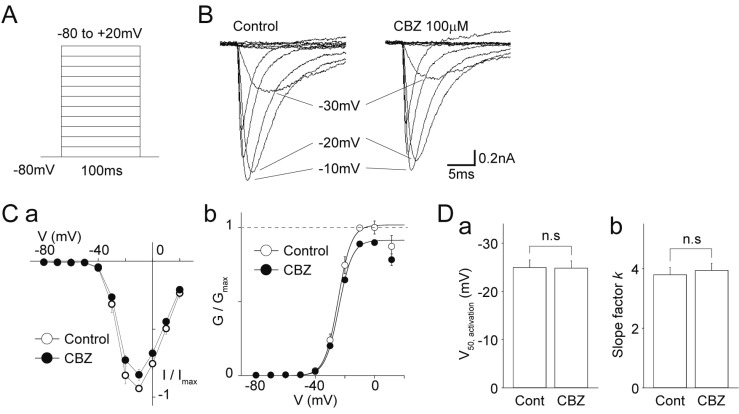

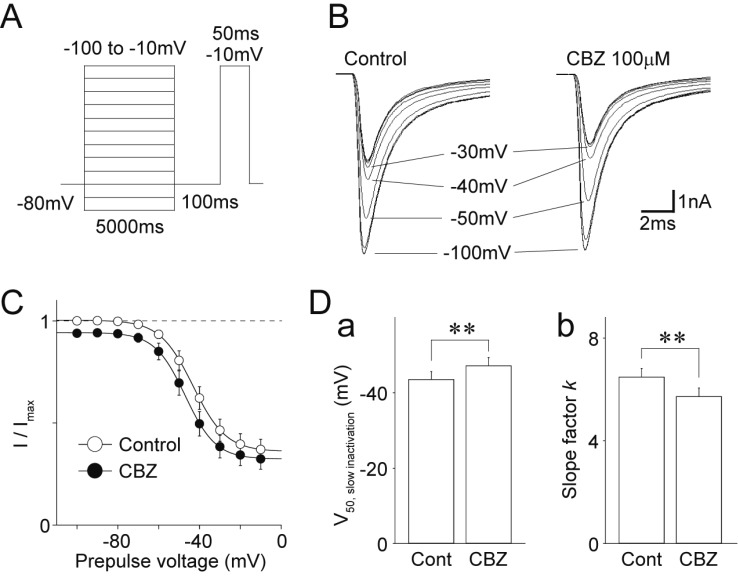

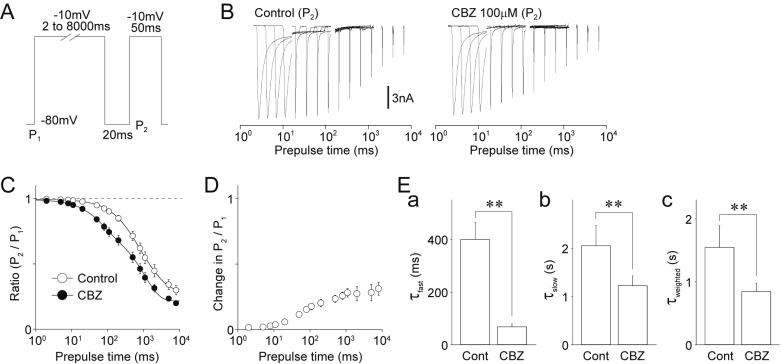
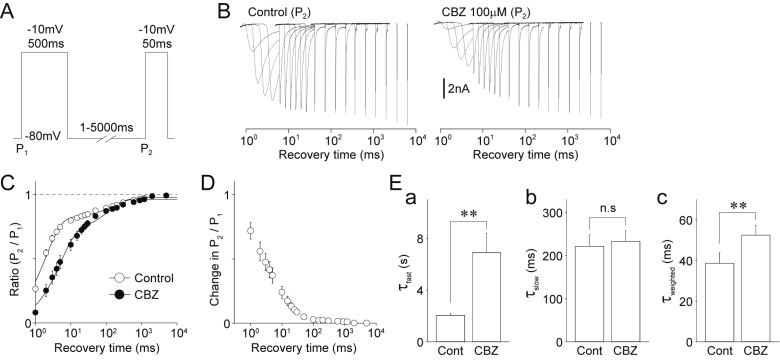
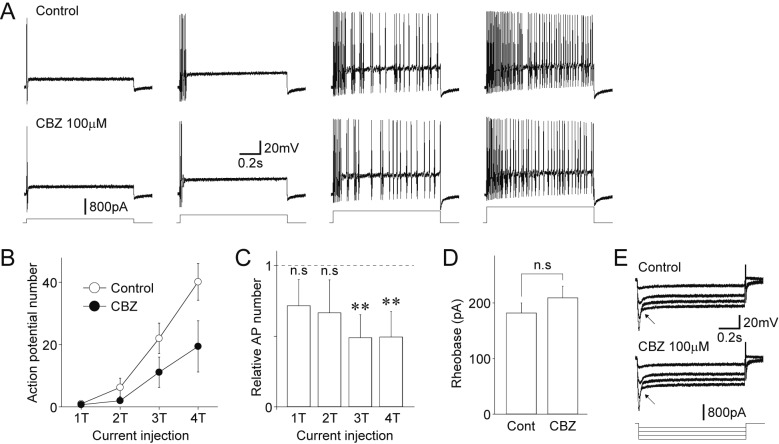




 PDF
PDF ePub
ePub Citation
Citation Print
Print


 XML Download
XML Download